
Every day is an endless competition for your precious attention.
Thanks to smartphones and the Internet, it’s easier than ever for us to distract ourselves. Marketers in every niche are throwing big money at attracting as many eyeballs as they can. That explains why we see thousands of marketing messages a day.
This puts healthcare marketers in a difficult spot. We can’t stop marketing and trust our audiences to find us on their own. On the other hand, we can’t bombard people with annoying, pushy messaging without putting them off completely.
Within this challenge lies an incredible opportunity: content marketing. Strategic content can help marketers strike the right balance. Instead of blowing through budgets and fighting for attention, you can earn it by creating positive experiences.
Healthcare marketers have been notoriously slow to embrace digital marketing and adapt to changing customer taste. That’s changing rapidly, though, with marketers increasing their use of digital marketing to take advantage of these new technologies and channels.
Embracing these new marketing opportunities is a great first step. But it isn’t enough to build meaningful relationships. We must do more than just use new tools; we have to learn to use them in a way that keeps our audiences engaged.
One of the best ways– a way that’s often neglected– to do this is through content marketing.
With content marketing, healthcare brands have the opportunity to gain invaluable attention while creating experiences their audiences crave.
There’s a huge opportunity here because few healthcare brands are doing this well. If you can take advantage, you’ll stand out as someone worth paying attention to immediately.
It’s a win-win scenario. We marketers get the increased attention and deeper relationships we need for our brands to thrive. And our audience gets content that educates, entertains or both!
Here are some healthcare brands that are doing content marketing the right way.
Oscar is a private health insurance company focused on technology. Founded 12 years ago in New York City, they are on a mission to simplify shopping for health insurance.
To accommodate its small budget (compared to giants like Humana), Oscar uses a combination of marketing tactics. These range from running ads on the New York subway, to TV commercials or buying ad time on the music service Spotify.
Oscar also uses content marketing as well. One of the biggest draws to their website is an extensive glossary section. Confused insurance shoppers can look up terms they don’t understand, which helps simplify the process:
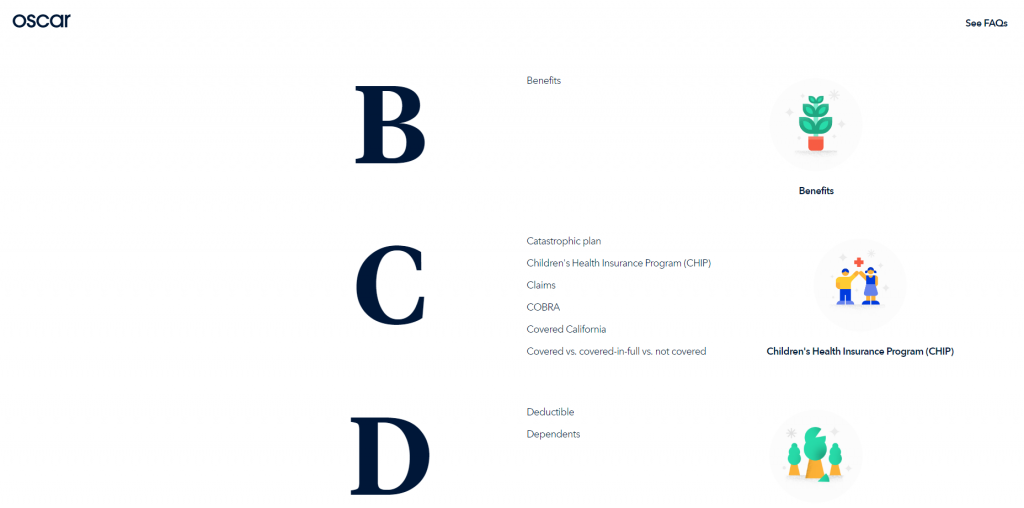
Oscar also features a Frequently Asked Question (FAQ) section on their website. Their FAQ covers a broad range of topics, whether it’s the more technical aspects of comparing insurance plans to staying healthy during the cold and flu season.
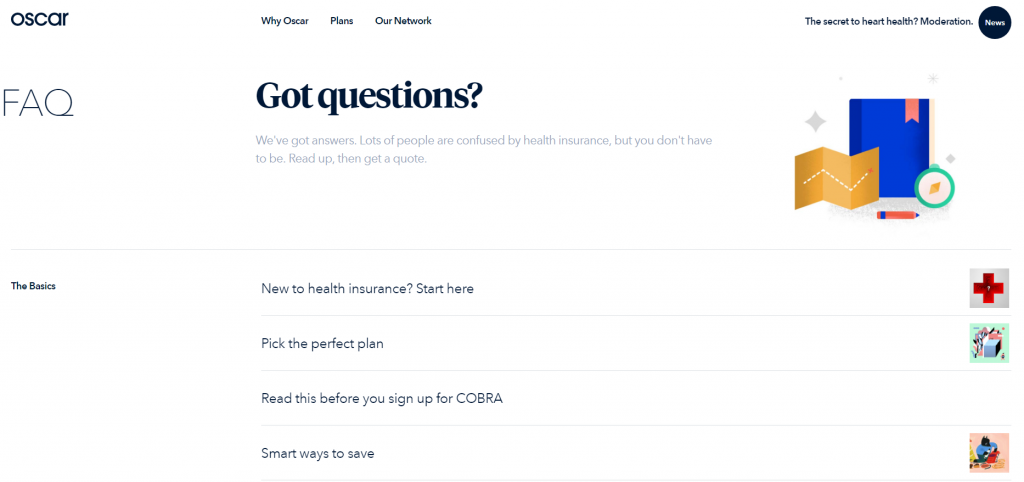
The broad scope ensures that anyone who reads the FAQ can get value from the content (even if they aren’t actively searching for insurance). The FAQ becomes a handy reference for people to revisit whenever they have a question.
The Cleveland Clinic is an excellent example of what a large budget and long-term commitment to content marketing can create.
Their most remarkable content achievement?
A massive “health library” where visitors can access thousands of articles, videos, and tools to manage their health better.
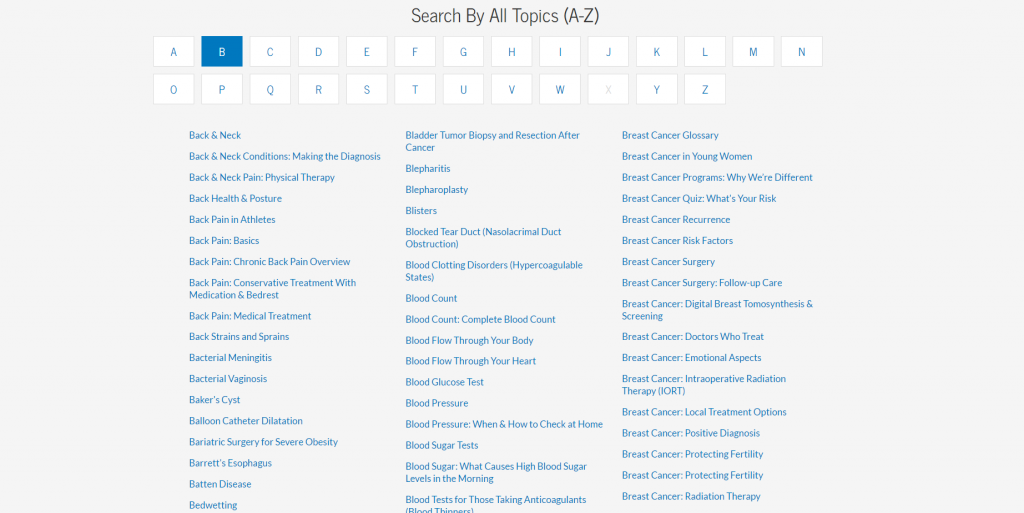
Finding the information you need is simple because you can search topics alphabetically. All of this valuable content turns the website into a de facto reference guide. Even if it isn’t immediately relevant to a visitor, he or she can bookmark it and come back later when their situation changes.
Note how the health library encompasses the full scope of their audience’s healthcare needs– all the way from initial research about symptoms through drugs and treatment options. This makes the resource valuable no matter where the visitor is on his or her healthcare journey.
If all that wasn’t enough, there’s also a separate resource section geared toward medical professionals with information about career opportunities, education, and referring patients:
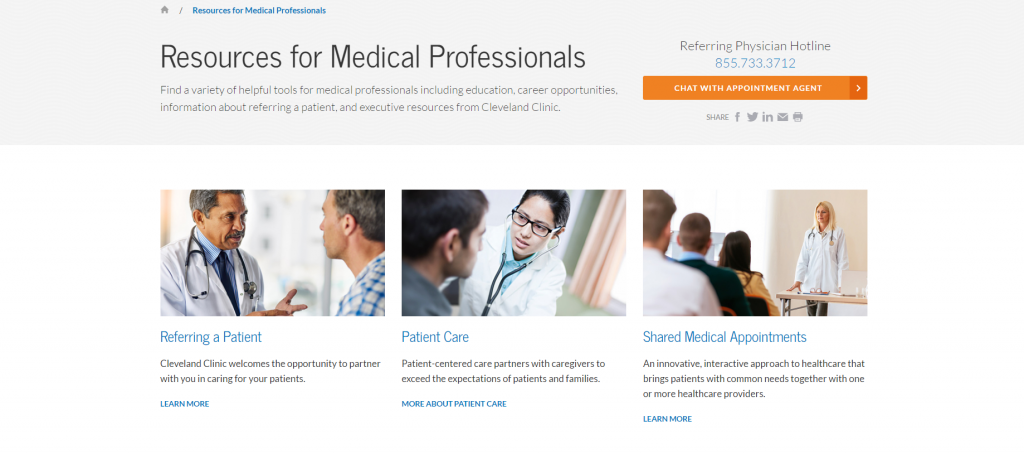
Separating your content by intended audience gives you flexibility if you’re trying to appeal to multiple groups of people. Everyone gets the information they need as efficiently as possible.
You probably know Philips as an electronics company that makes TVs, radios, and electric razors.
But what about healthcare equipment?
Over the last few years, Philips has made a big push to transition into the healthcare market. The challenge: getting people to see their established brand in an entirely new light.
To help transition into the healthcare space, Philips relies heavily on content marketing. The goals, according to global head of digital and social Blake Cahill, are to build thought leadership and trust.
One of the biggest content assets is their resources library section on their website. Visitors can browse through tons of videos and courses that show healthcare providers how to make the most of their Philips healthcare products:
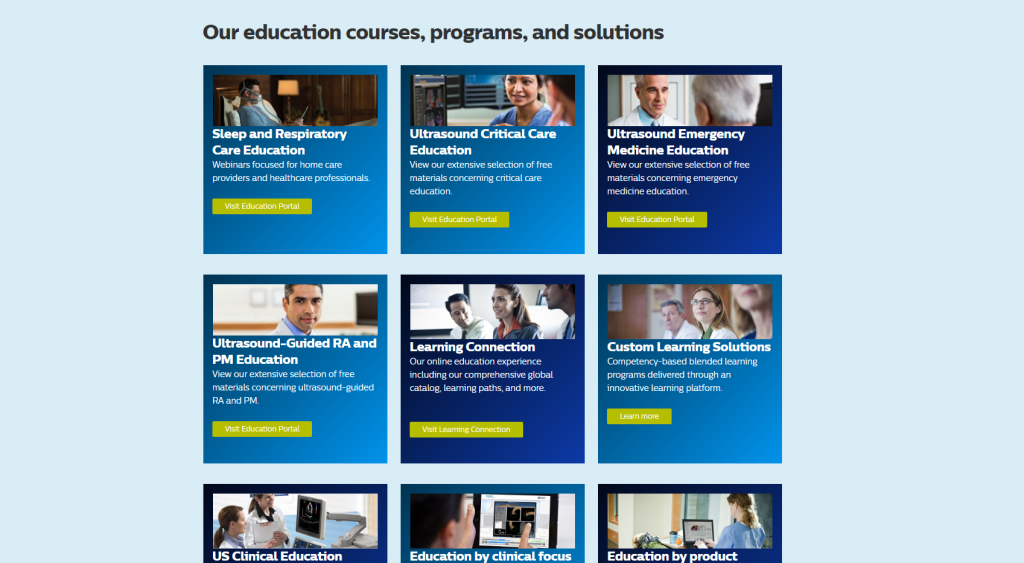
The benefits of these resources are twofold: 1) customers get better healthcare, and 2) providers save time and become more efficient.
Philips is also active on various social media platforms. One of their most engaging accounts is on Twitter. They often post short videos that highlight how their products work.
Here’s a Tweet featuring a short video of an MRI:

This is an interesting way to simplify complex products visually. People are more likely to interact with– and share– this type of content just because it looks so cool.
In a world full of noise and empty promises, we could all use a bit more substance.
Content marketing is a cost-effective way to create and build meaningful relationships. It’s a shame that more healthcare brands aren’t using it well.
The good news? There’s an incredible opportunity now for your brand to get noticed from the pack. With a long-term commitment to connect through meaningful content, you can emerge as a true authority and someone to trust.
Content marketing is much more than a short-term play to drum up customers. It’s a fundamental philosophy about how to do business. It takes time to pay off, but there’s no better moment to start than now.
